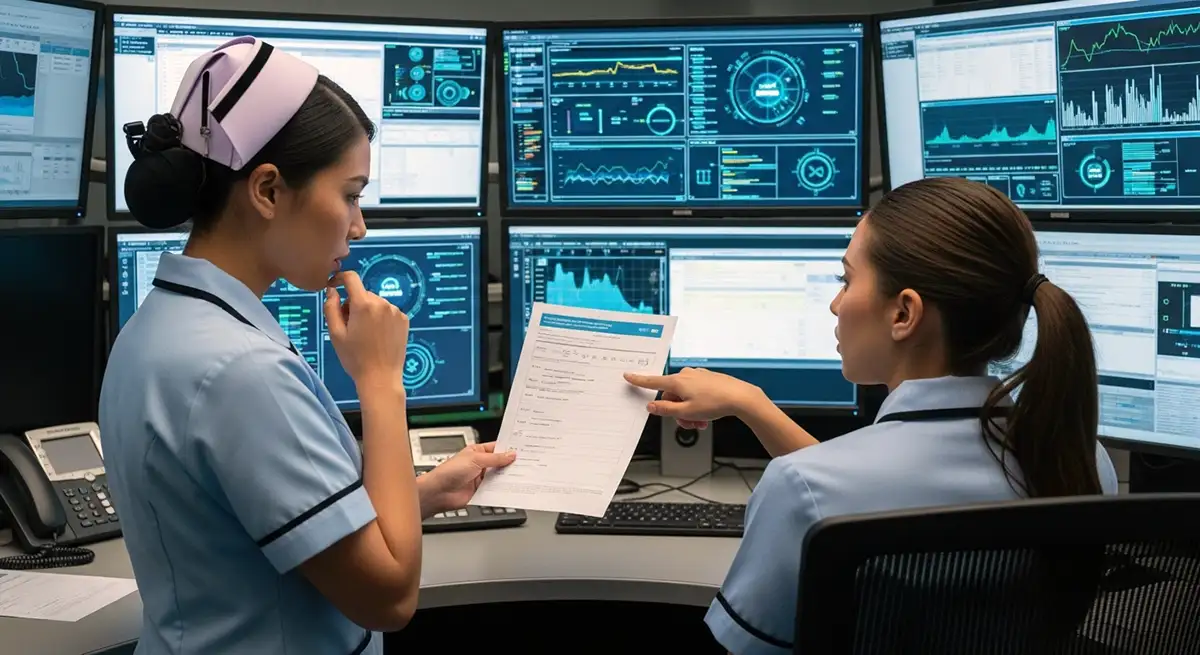
AI Quality Control Vision: Use Cases that Deliver ROI
What is AI Quality Control Vision?
Definition and Overview
In the rapidly evolving landscape of technology, AI quality control vision has emerged as a transformative tool for businesses seeking to enhance their operational efficiencies and product quality. AI quality control vision refers to the application of artificial intelligence technologies, particularly computer vision techniques, to monitor and evaluate the quality of products and processes in various industries. By leveraging advanced algorithms, this system analyzes visual data in real-time to identify defects, ensure compliance with standards, and optimize quality assurance processes.
This technology integrates machine learning, deep learning, and image processing to automate and streamline quality control tasks that were traditionally labor-intensive. By replacing manual inspections with AI-driven analysis, organizations can significantly improve their quality assessment capabilities, leading to more consistent product outcomes.
How AI Quality Control Vision Works
The functioning of AI quality control vision is underpinned by sophisticated machine learning models that are trained on vast datasets of images to recognize acceptable and unacceptable product characteristics. Initially, these models undergo a training phase, during which they learn to identify various defects and anomalies through labeled examples.
Once trained, the system can process images captured by cameras installed in production lines or on inspection stations. These cameras continuously feed visual data into the AI models, which analyze the images in real time. When a defect is detected, the system can trigger alerts or automatically reject the flawed products, thus ensuring that only high-quality items reach the market. This automated approach not only enhances accuracy but also reduces the reliance on human intervention, which can be prone to errors and fatigue.
Benefits of AI Quality Control Vision
Improved Accuracy and Consistency
One of the foremost benefits of implementing AI quality control vision is the remarkable improvement in accuracy and consistency it offers. Traditional quality control methods often rely on human inspectors who can miss defects due to fatigue or oversight. In contrast, AI algorithms are designed to analyze visual data with high precision, ensuring that even the smallest defects are identified. This leads to a significant reduction in false positives and negatives, thereby enhancing the overall quality of the final products.
Moreover, AI quality control vision systems can maintain consistent performance over time, unaffected by human factors. This consistency is crucial in industries where quality standards are stringent, and compliance is non-negotiable.
Reduction of Operational Costs
The adoption of AI quality control vision effectively reduces operational costs for businesses. By automating quality inspections, organizations can minimize labor costs associated with manual inspections and reduce waste resulting from defective products. Additionally, early detection of quality issues allows companies to address problems before they escalate, thereby reducing costly recalls and rework.
Furthermore, the efficiency gained through AI-powered inspections often translates into faster production cycles. With quicker identification of defects, production lines can operate more smoothly, leading to increased throughput and a better return on investment.
Enhanced Decision-Making Capabilities
AI quality control vision empowers businesses with actionable insights derived from data analysis. By collecting and analyzing visual data, organizations can identify trends, patterns, and recurring issues that may indicate deeper operational problems. These insights enable decision-makers to implement targeted interventions and process improvements.
In addition, real-time data analytics provided by AI systems facilitate proactive quality management strategies. Rather than waiting for quality issues to arise, organizations can continuously monitor performance and make informed decisions to enhance product quality and operational efficiency.
Use Cases of AI Quality Control Vision
Manufacturing Industry Applications
In the manufacturing sector, AI quality control vision is gaining traction as a vital component of quality assurance processes. Factories are integrating AI systems to monitor production lines, inspecting products for defects such as scratches, dents, or dimensional inaccuracies. This application is particularly beneficial in high-volume production environments where the margin for error is minimal.
For instance, automotive manufacturers utilize AI-powered vision systems to inspect components for quality assurance before assembly. By ensuring that only defect-free parts are used, manufacturers can enhance the reliability and safety of their vehicles.
Healthcare and Medical Device Quality Control
The healthcare industry is another domain where AI quality control vision is making significant strides, particularly in quality control for medical devices. With rigorous regulatory standards in place, ensuring the quality and safety of medical devices is paramount. AI systems can analyze the visual attributes of these devices to detect anomalies that could compromise their functionality.
In addition, AI quality control vision can assist in the inspection of pharmaceuticals, ensuring that packaging and labeling meet compliance standards. By automating these inspections, healthcare organizations can reduce human errors and enhance patient safety.
Food and Beverage Quality Assurance
Food and beverage manufacturers face unique challenges when it comes to quality control, as products must meet stringent health and safety regulations. AI quality control vision can be employed to monitor food products for quality, ensuring that they are free from contaminants and meet aesthetic standards.
For example, AI systems can inspect fruits and vegetables for ripeness and quality, automatically sorting them based on predefined criteria. This not only improves product quality but also reduces waste, as only the best items reach consumers.
Retail and E-commerce Inspection
In the retail and e-commerce sectors, AI quality control vision is transforming the way companies manage inventory and product quality. Retailers can leverage AI systems to inspect items for defects before they are shipped to customers, ensuring a higher level of customer satisfaction.
Moreover, AI quality control vision can be utilized in warehouses to monitor product packaging and labeling, ensuring accuracy and compliance with shipping standards. This technology helps retailers maintain a competitive edge by delivering high-quality products to their customers promptly.
How to Implement AI Quality Control Vision
Assessing Your Current Quality Control Processes
Before implementing AI quality control vision, organizations must conduct a thorough assessment of their existing quality control processes. This assessment should identify the current challenges, inefficiencies, and pain points in the quality assurance workflow. Understanding these aspects will help businesses determine the specific areas where AI can add the most value.
Selecting the Right AI Technology
Choosing the appropriate AI technology is crucial for successful implementation. Organizations must evaluate various AI solutions available in the market, considering factors such as compatibility with existing systems, scalability, and ease of integration. It is essential to collaborate with AI technology providers who offer tailored solutions that align with the organization’s specific quality control needs.
Training and Testing AI Models
Once the right technology is selected, organizations must focus on training and testing AI models. This involves feeding the AI system with a comprehensive dataset that includes diverse examples of both defect-free and defective products. Continuous training and evaluation of the models are necessary to ensure that they accurately identify defects and adapt to changing quality standards.
Integration with Existing Systems
Integrating AI quality control vision with existing systems is a critical step in the implementation process. Organizations should work closely with their IT teams to ensure seamless integration with production lines, inventory management systems, and other quality assurance tools. This integration enables real-time data sharing and enhances the overall efficiency of quality control processes.
AI Quality Control Vision Best Practices
Continuous Monitoring and Improvement
Implementing AI quality control vision is not a one-time effort; it requires ongoing monitoring and improvement. Organizations should establish processes to regularly review the performance of AI systems, assessing their accuracy and effectiveness. This continuous feedback loop allows businesses to make necessary adjustments and enhancements to their AI models, ensuring they remain aligned with evolving quality standards.
Collaborating with Stakeholders
Successful implementation of AI quality control vision necessitates collaboration among various stakeholders, including production teams, quality assurance personnel, and IT specialists. Engaging these stakeholders in the process fosters a shared understanding of the technology's capabilities and encourages a culture of quality within the organization.
Ensuring Data Quality and Security
Data quality and security are paramount when implementing AI quality control vision. Organizations must establish protocols to ensure the integrity and accuracy of the data used for training AI models. Additionally, safeguarding sensitive data is crucial to maintain compliance with data protection regulations and to protect the organization’s reputation.
AI Quality Control Vision Examples
Case Study: Successful Implementation in Manufacturing
A leading automotive manufacturer recently implemented AI quality control vision to enhance its quality assurance processes. By integrating AI-powered vision systems into their production lines, the company achieved a 30% reduction in defect rates. The technology enabled the identification of defects in real-time, allowing for immediate corrective actions. This case exemplifies how AI quality control vision can drive significant improvements in product quality and operational efficiency.
Case Study: Enhancements in Healthcare Quality Control
In the healthcare sector, a major medical device company adopted AI quality control vision to monitor the production of its devices. By utilizing AI systems to inspect device components, the company enhanced its compliance with regulatory standards, resulting in a 20% decrease in quality-related issues. The integration of AI technology not only improved product quality but also streamlined the overall quality assurance workflow.
Case Study: Retail Innovations with AI Vision
A leading e-commerce retailer implemented AI quality control vision to ensure the quality of their products before shipment. By adopting this technology, the retailer achieved a 15% increase in customer satisfaction due to fewer returns related to product defects. This case highlights the potential of AI quality control vision to enhance customer experiences and drive business success.
Future Trends in AI Quality Control Vision
Advancements in Machine Learning Algorithms
As AI technology continues to evolve, advancements in machine learning algorithms are expected to enhance the capabilities of AI quality control vision systems. New algorithms may improve the accuracy and speed of defect detection, enabling businesses to achieve even higher quality standards with greater efficiency.
The Role of Edge Computing in Quality Control
The integration of edge computing with AI quality control vision is poised to revolutionize how businesses manage quality assurance. By processing data closer to the source—such as on production lines—organizations can achieve real-time analytics and quicker decision-making. This shift will further enhance the responsiveness of quality control processes.
Integration of AI with IoT for Enhanced Monitoring
The convergence of AI with the Internet of Things (IoT) is expected to create new opportunities for quality control. By connecting AI vision systems with IoT devices, organizations can create a comprehensive monitoring ecosystem that tracks product quality throughout the supply chain. This integration will facilitate proactive quality management and enhance overall operational performance.
Conclusion
Summary of Key Points
AI quality control vision is a powerful tool that offers numerous benefits, including improved accuracy, reduced operational costs, and enhanced decision-making capabilities. Its applications span various industries, including manufacturing, healthcare, food and beverage, and retail. Implementing AI quality control vision requires a strategic approach, focusing on assessing current processes, selecting the right technology, training models, and ensuring integration with existing systems.
Final Thoughts on AI Quality Control Vision
As businesses increasingly recognize the value of AI quality control vision, the technology is set to redefine quality assurance practices across industries. By embracing this innovative approach, organizations can ensure product excellence, boost customer satisfaction, and ultimately drive profitability. The future of quality control lies in the hands of AI, and those who adapt will be well-positioned to thrive in an increasingly competitive landscape.
For more insights on how AI can transform your business processes, explore our guide on industry AI applications.






No comment yet, add your voice below!